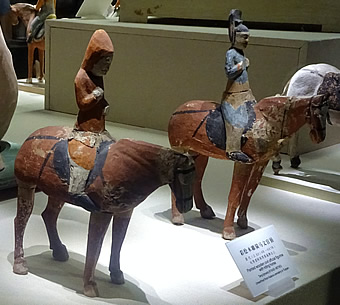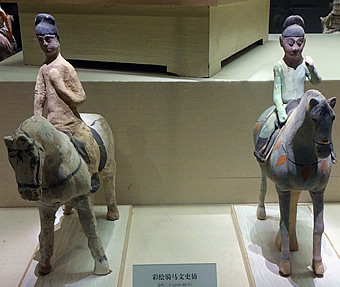

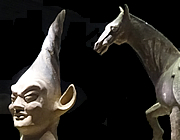
In the far north west of China, Urumqi, capital of the Xinjiang Autonomous Uyghur Region, is home to a very good museum, a great place to start exploring the many different cultures living here. Mummies thousands of years old are amazingly well-preserved.
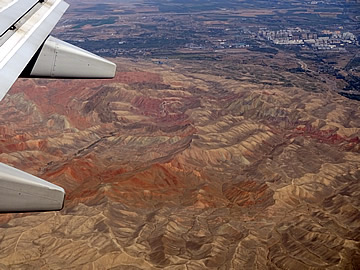
Urumqi, in China's far north west, is a modern city, the capital of the Xinjiang Autonomous Uyghur Region, which has significant oil and mineral resources. It is large and modern, built on top of much older settlements, home to around 3 million people, about 40% Han Chinese - there has been encouragement of Han Chinese to move into the region. And the time itself is weird - we were operating on Beijing time, though the actual time difference is two hours earlier! The hotels keep to Beijing time but the people who live here, such as farmers, operate naturally on local time, two hours earlier, so when we were at ten o'clock it was only 8 for them.
Xinjiang is home to around 50 different ethnic groups, the Uyghurs and Han accounting for the majority. I was a little concerned about visiting this area because there has been something of a situation with the Muslim Uyghurs. It has been reported that many thousands, along with other ethnic minorities, are held in camps for "re-education", ostensibly to counter terrorism. We very quickly got the impression that being too inquisitive about Uyghur history in the region was not encouraged, and we certainly didn't want to get anyone into trouble, so we didn't ask any awkward questions.
We immediately noticed the huge number of cameras everywhere, including in lifts. Security along roads was also intense and many times we had to leave the car to go through checkpoints. We never had any problems, and the security staff were usually very friendly, but it felt quite oppressive.

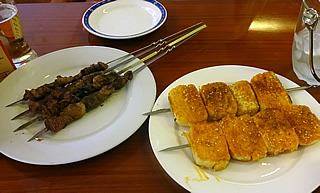
We had a bit of a wander from our hotel near the People's Park. There really isn't much to see. We looked for somewhere to eat but the best place had a lot of people waiting for tables. Other restaurants had helpful pictures of what's on offer but there's not much variety and much that doesn't look very appetising - skewered turkey claws for instance! We ended up going back to the hotel and had a similar problem there, though the staff tried their best, none really spoke English. We soon had about half a dozen people trying to help us and one went off to find someone with a bit of English. She helped us to decide on skewered lamb (we'd been about to order a dish of 1kg of meat!) and "buns". Fortunately we were only staying one night.
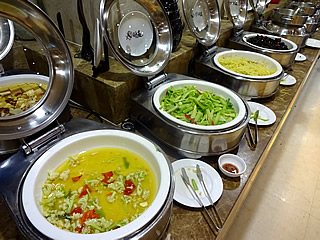
Breakfast was extensive but again very difficult. To us it just looked like a continuation of what was on offer from the restaurants the previous evening: lots of salad-type things, noodles, black bean and black rice broth, stir fried rice dishes. Bizarrely there was a separate "Chinese Corner" with steamed vegetables in lidded baskets. The local people were thoroughly enjoying it though and we had a nice talk with a couple of women who were touring the area; they were very interested in us, there were no other "westerners" here.
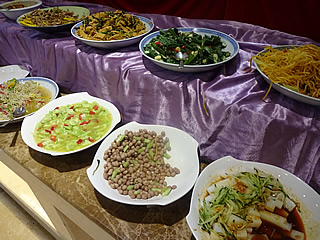
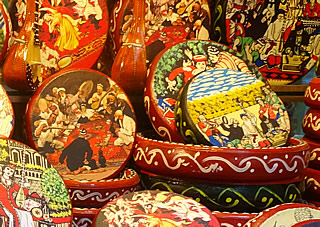
The hotels don't accept our credit cards, and WiFi access depends on having a Chinese SIM card; with a data package and finding 3G we managed to get online but access is going to be very restricted in Xinjiang we think.
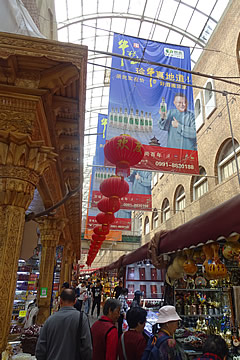
We had lunch at the Erdaoqiao Grand Bazaar where we spent a bit of time looking at the various stalls. Housed in a huge new building it has no atmosphere at all.
There are many stalls selling Chinese medicinal remedies, possibly more selling dried and candied fruit. Lots of very bright and gaudy ethnic caps and jewellery. There was a huge hall selling jade "10% real, 90% fake" said our guide. Very bored-looking retailers and nobody buying at all.
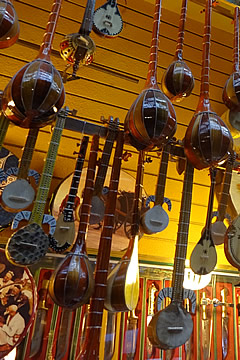
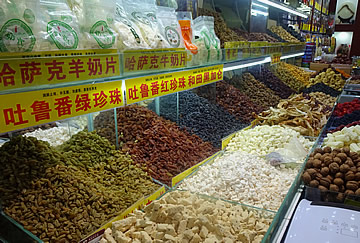
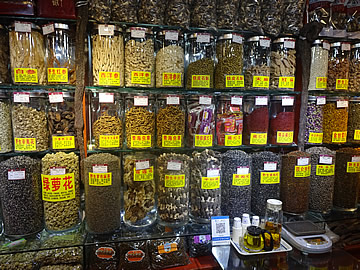
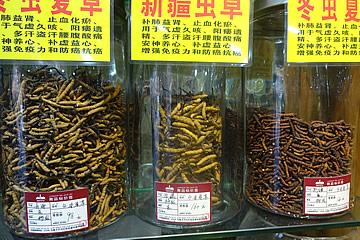
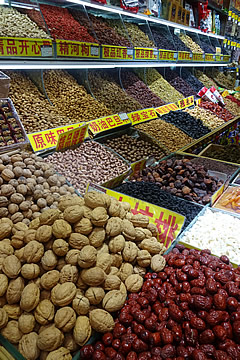
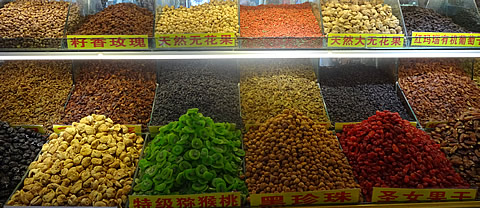
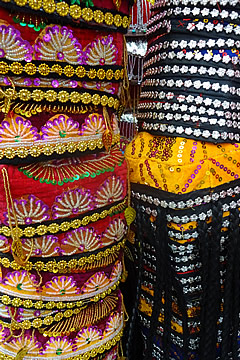
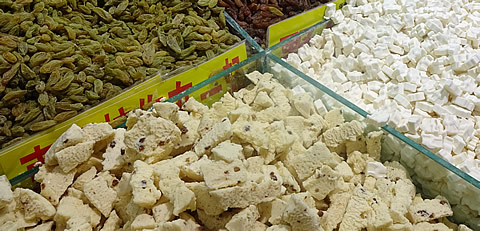

We were unable to go into the mosque, it was closed, even to the local people.
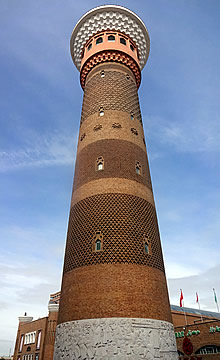
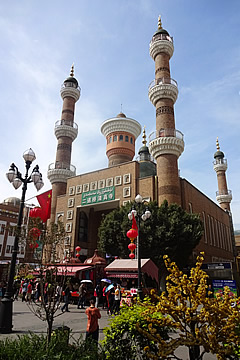
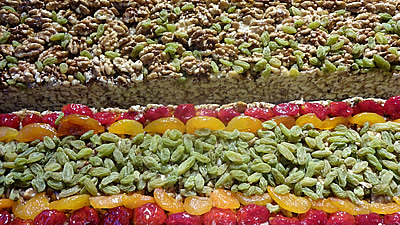
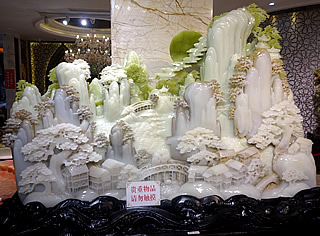
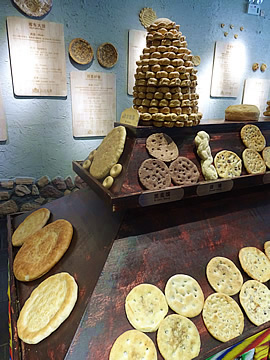
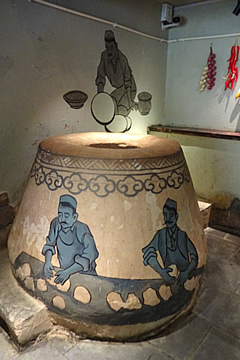
There was a very interesting museum/bakery making a very traditional Xinjiang Uyghur specialty: Nang. This is a disc-shaped bread cooked on the inside of a large "pit" at very high temperature.
There were recipes for different types of nang on the walls of the small museum: sunflower seed, meat, sweet, brown - it seems they can be flavoured with all kinds of things. Meat nang, for instance, is made with minced mutton, salt, ground cumin, ground pepper and onion.
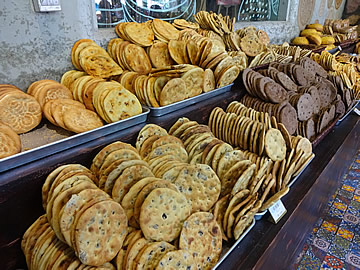
The nang in the attached shop looked gorgeous, it would have been nice to try some but our guide was anxious to get us to lunch - we had a flight to catch and, because of high security, needed to be at the airport well in advance.
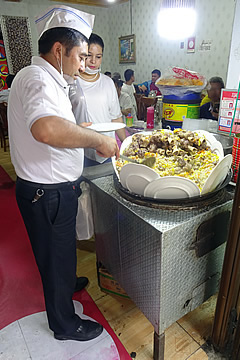
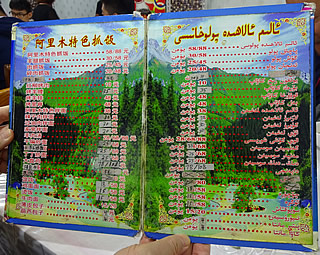
He took us to a local spot famous for its plov (pilaf) - rice cooked in broth with a few lumps of lamb and vegetable strips. It was very good and a small dish was quite enough for us, along with some excellent spicy lamb kebabs.
The single westerner we saw while in Urumqi was outside this restaurant, wondering whether to try it. We were able to recommend what we'd had and he decided to give it a go. He'd been in Kashgar where, he said, it was very hot.
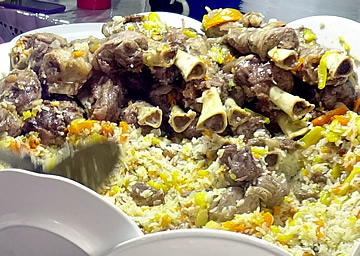
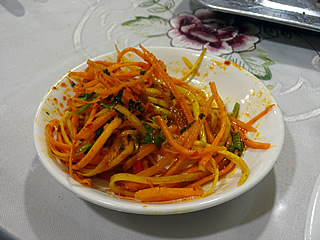
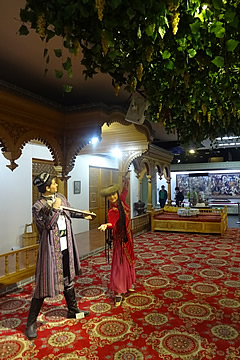
There is one very good reason for coming to Urumqi, apart from transit to other places, and that is this museum. Colin Thubron was intrigued by the mummies 1 and I was very keen to see them, but the museum has a great deal more, housed in a brand new, purpose-built building.
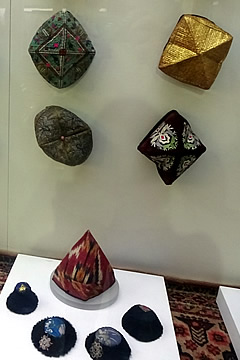
On the ground floor are a series of dioramas illustrating the ways of life of the major ethnic groups of the region: Uyghurs, Uzbeks - apparently of the same ethnic background as the Uyghurs but coming from the area of the great General Uzbek, Tatars, Kazakhs, Kyrgyz, Mongols, Manchu Chinese, Han Chinese, and many more. Our guide was very knowledgeable and gave us a huge amount of information, which I tried desperately to remember, writing down as much as I could later.
There is no information in the museum about the traditional way of life, at least not in English; nothing on how some of the cultures arrived in this region, how the people survived in the conditions, though many were obviously nomadic herders. They seemed quite idealised views. We were fortunate that our guide was able to explain much about each of the different ethnic groups.
The first of the dioramas was a Uyghur family home with a courtyard covered with shady vines and a wide entrance for carts. A large bed served for eating meals, any chores that could be performed sitting down, or just relaxing. It was where the men slept at night, the women slept on the roof which was probably cooler.
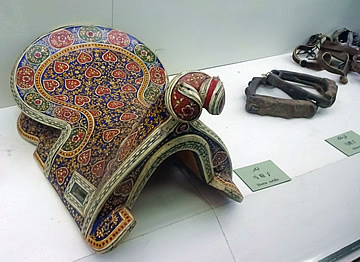
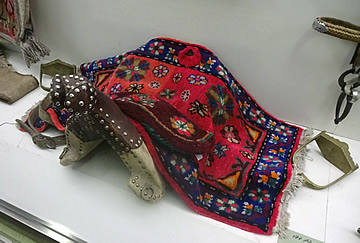
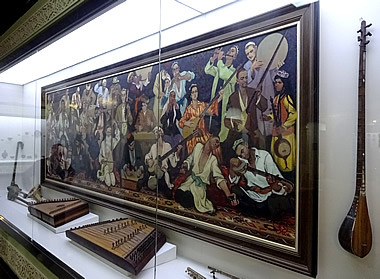
Horses feature strongly in many of the cultures. A rich man's saddle would be finely painted whereas a poor man's saddle was only covered in leather and maybe a blanket or rug.
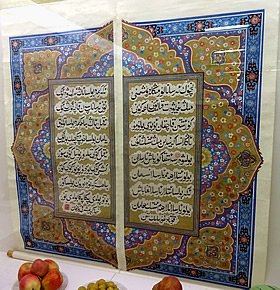
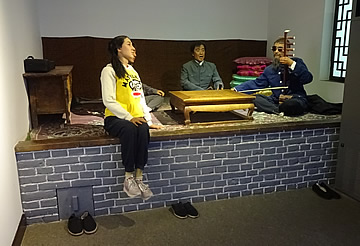
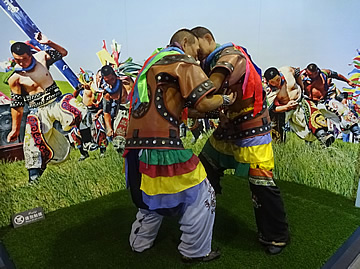
The Great Wall was built to protect China from outside attack, and to a large extent this meant keeping out the Mongols. Their leader, Genghis Khan, breached the Wall to invade in 1211. Now the region of Inner Mongolia is part of China and Mongols are one of the ethnic minorities present in Xinjiang. Inner Mongolia is one of the largest autonomous regions, Han Chinese forming a large part of the population.
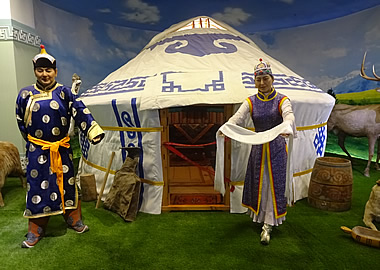
Many of the ethnic groups traditionally lived in yurts, round tents which here are beautifully decorated.
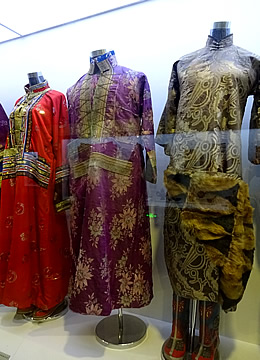
Their best clothing is also very beautiful, usually featuring tunics and distinctive caps, again exquisitely embroidered, often in individual personalised styles.
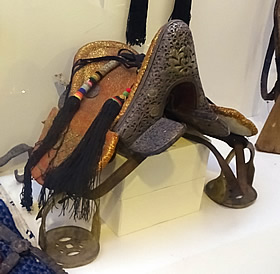
Many of the peoples - Mongols, Tajiks, Kazakhs, Kyrgyz - were consummate horse riders, a skill learned from long hours in the saddle herding their livestock. They can sleep in the saddle and Mongols in particular were fearsome in warfare as military cavalry, able to fire a bow in almost any direction by standing in their stirrups. The central Asian horse, though small and not particularly fast, had great stamina and could survive on a very poor diet of foraged grass and other plants.
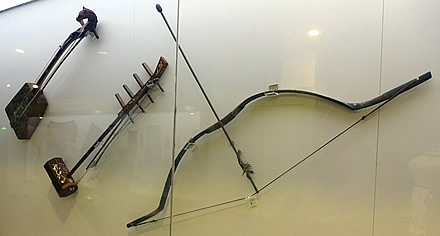
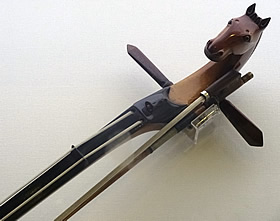
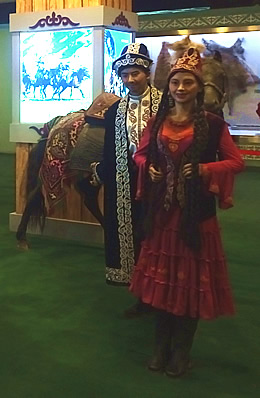
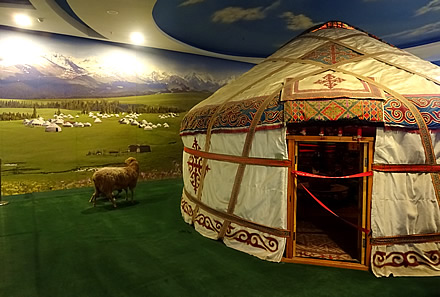
Some, such as the Kazakhs, even do their courtship on horseback, in a race between men and women - the women wielding a whip!
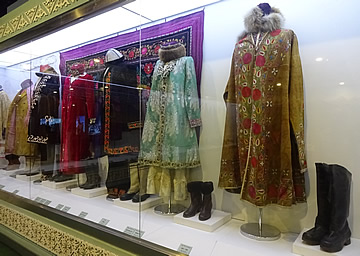
Fermented mare's milk was a popular traditional, very alcoholic, beverage. It was made by pounding the milk over many hours, taking turns of about 15 minutes each. The resultant potent brew is so strong that a little will make a man so drunk that he will not be able to walk, though it is said of the Kazakhs that they are such good horsemen they can still ride.
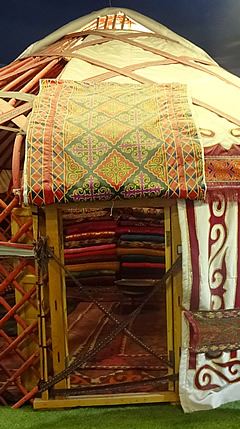
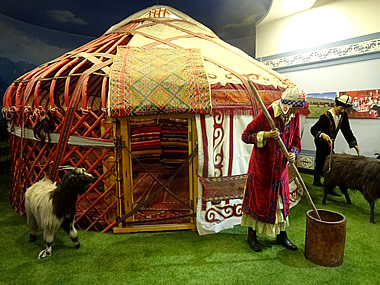
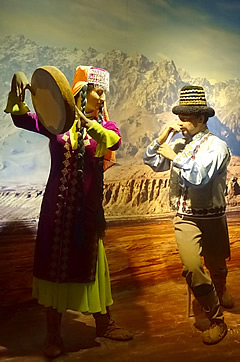
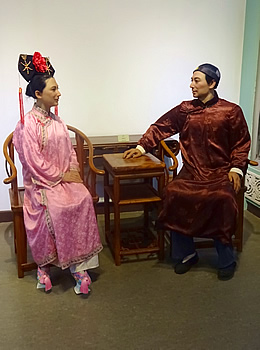
Many of the ethnic minorities have much in common: a traditionally nomadic lifestyle, a love of and skill with horses, the love of music and dance, a highly developed skill in the artistic decoration of clothes and textiles. Distinctive hats differ greatly from group to group, and even, in some cases, from person to person, though some costume elements are common such as a tunic or embroidered jacket. Probably the embroidery style is unique to each ethnic group too.
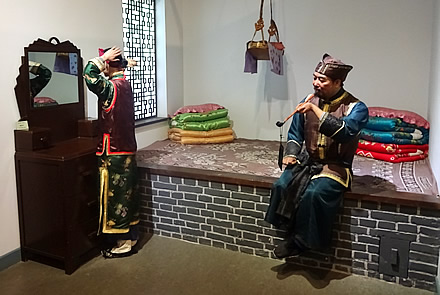
On up to the first floor of the museum and the famous mummies. The introduction to the mummies states that their extremely well-preserved state of preservation is due to the very dry and saline conditions in which they were buried. These aren't really mummies, in the sense of the wrapped mummies of Egypt, but rather desiccated corpses.
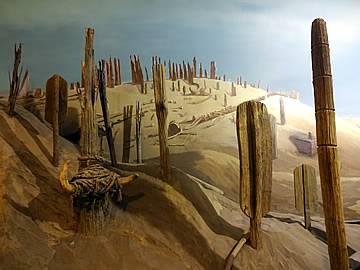
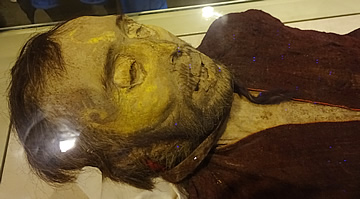
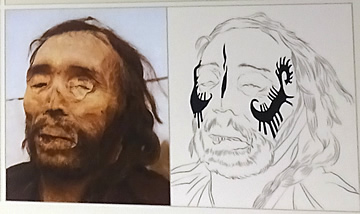
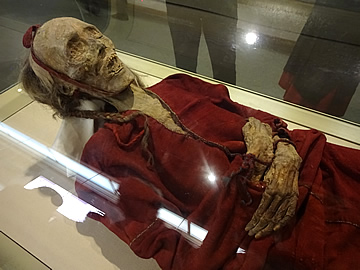 Braided hair and the hands held in place with a cord. She too had facial tattoos.
Braided hair and the hands held in place with a cord. She too had facial tattoos.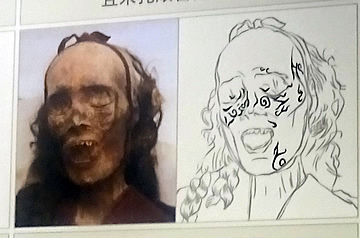
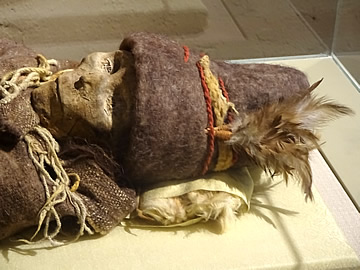
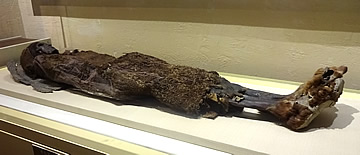
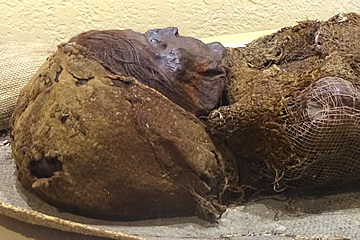
The Tarim Basin and Turpan-Hami Basin were the site of ancient cemeteries, many thousands of years old. Xinjiang was central to the ancient Silk Road stretching from Xi'an to the mediterranean and saw travellers and traders from both east and west passing through over millenia. DNA analysis of mummies has indicated origins from both the east and west - even European.4
Colin Thubron describes "Western giants with blond and reddish hair, high-bridged noses and heavy beards"1 pulled from the sand that protected them for up to 4,000 years.
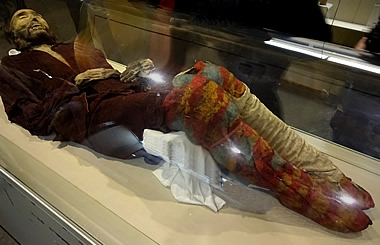
Ancient cemeteries have been excavated in the Peafowl River in the Lop Nor region in south west Xinjiang. Graves are often marked by a pole, for a male, or a wood paddle-shape for a female. Coffins at Xiaohe cemetery were formed with curved long sides, end boards and a long lid, with no base - in the shape of an upturned boat, along with many grave goods such as straw baskets, wool fabrics, bronze and wooden items. The clothing of felt hats, woollen cloaks, leather boots are just as well-preserved.
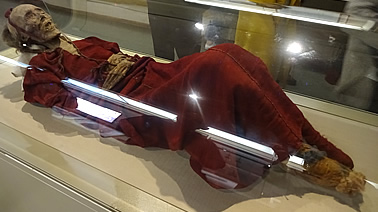
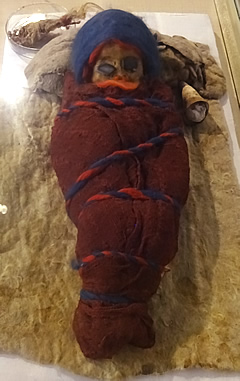
Buried near to Cherchen Man and the women buried with him was the body of a baby, wrapped in the same red cloth, bound with a red and blue cord, the same as found around the wrists of Cherchen man. Blue stones were placed on the eyes, red hair escapes from a bright blue bonnet. One is inescapably drawn to the conclusion that this was their child.
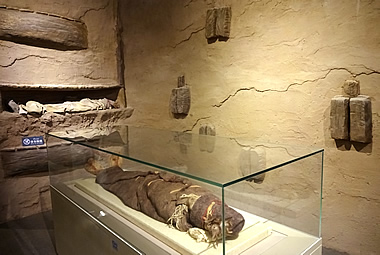
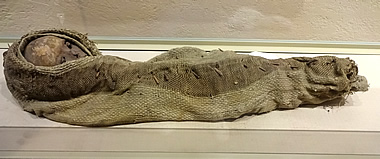
The most celebrated of the mummies, also around 3,800 years old, is the "Beauty of Loulan". Again extremely well-preserved her high cheek boned face looks very Caucasian.
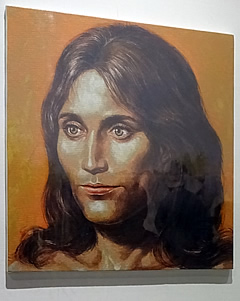
It might be thought that it is rather macabre to gaze upon these millenia-old mummies, and there is no doubt that some are a fearsome sight; but some are so lifelike and I felt only compassion and curiosity about these people and their lives, and imagine that they were probably not so very different from ourselves.
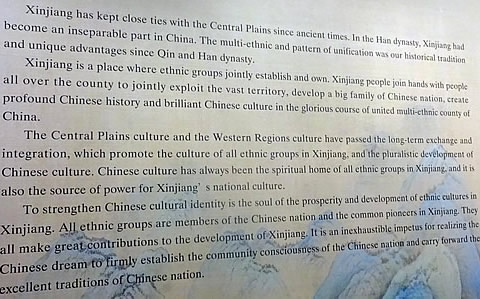
Several information boards declare the multi-cultural development of China, but there seems to be some form of control of the Uyghurs going on in Xinjiang at the moment at the very least.
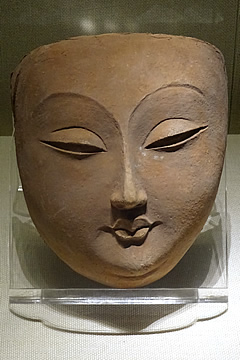
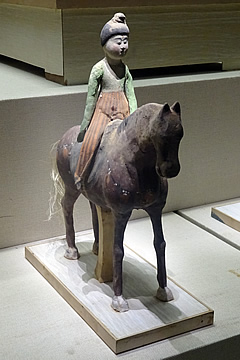
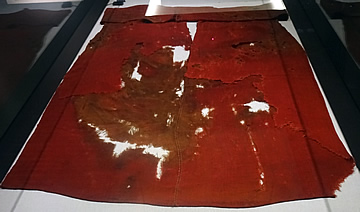
Back down on the ground floor we took a look at the exhibits tracing the history of Xinjiang and of the Silk Road in the region.
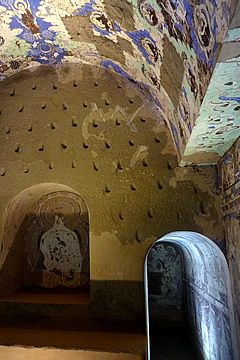
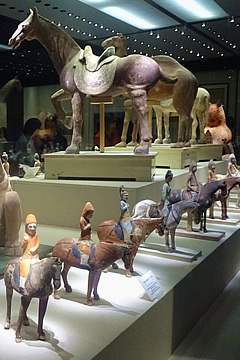
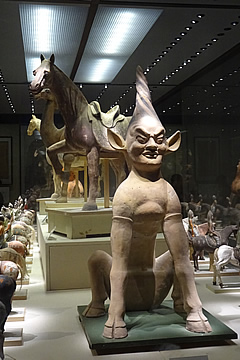
There is a wonderful series of painted figures unearthed from the Tang Dynasty (618-907 AD) Astana cemetery in Turpan. Some are of clay, others carved from wood, but they all seemed individually made.
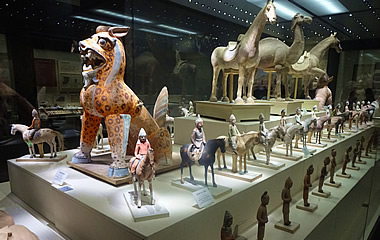
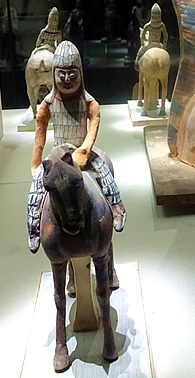
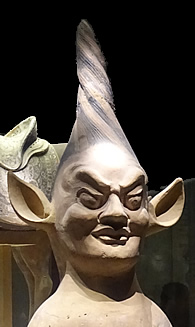
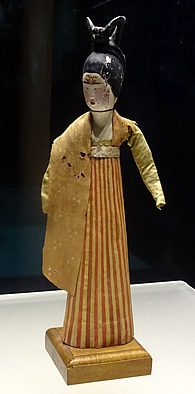 Painted female dancer figurine.
Painted female dancer figurine.
